Abstract
A total of 276 patients with a high risk of developing postoperative seizures were randomised to treatment with carbamazepine or phenytoin for six or 24 months, or to no treatment. No significant differences were found (though the confidence limits were fairly wide) between the regimes in respect of the incidence of seizures or death. In a substantial proportion of the patients postoperative epilepsy remained a continuing disability. A high incidence of drug-related side effects was found in the treatment groups. Prophylactic anticonvulsants cannot therefore be recommended routinely following supratentorial craniotomy.
Full text
PDF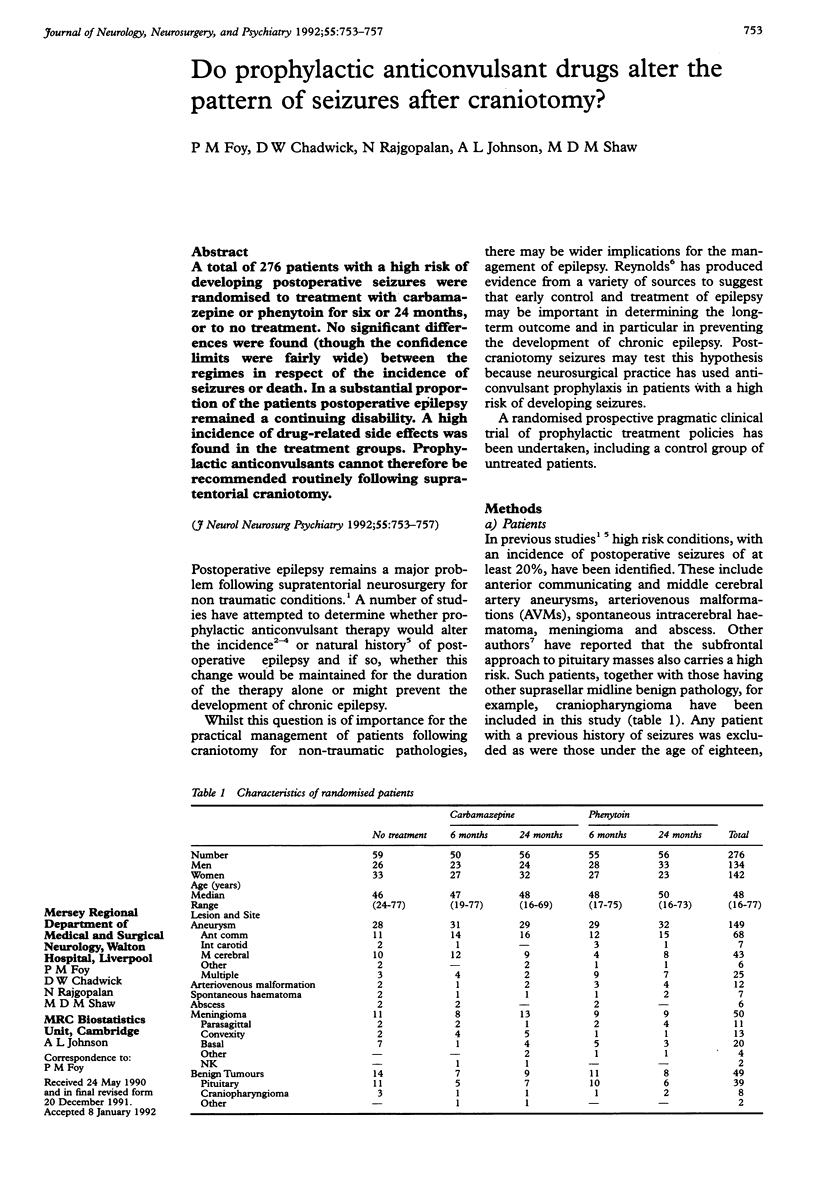
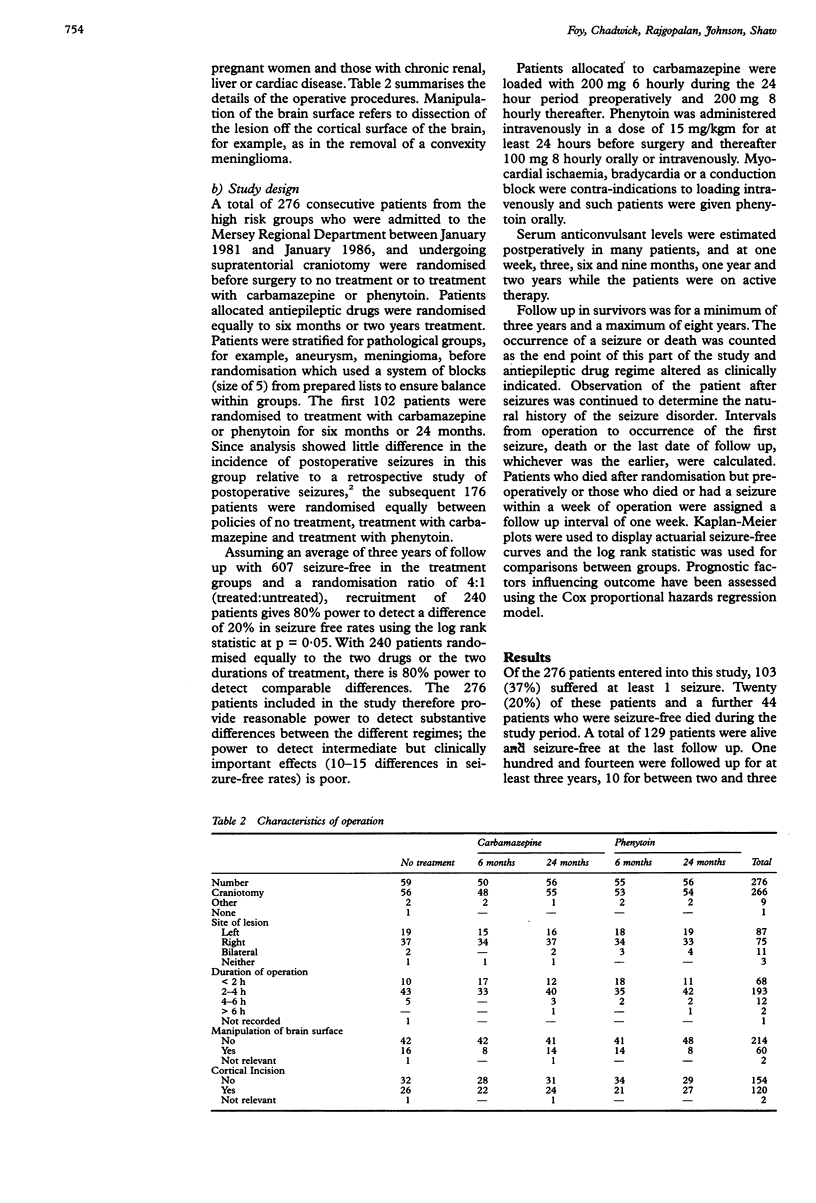
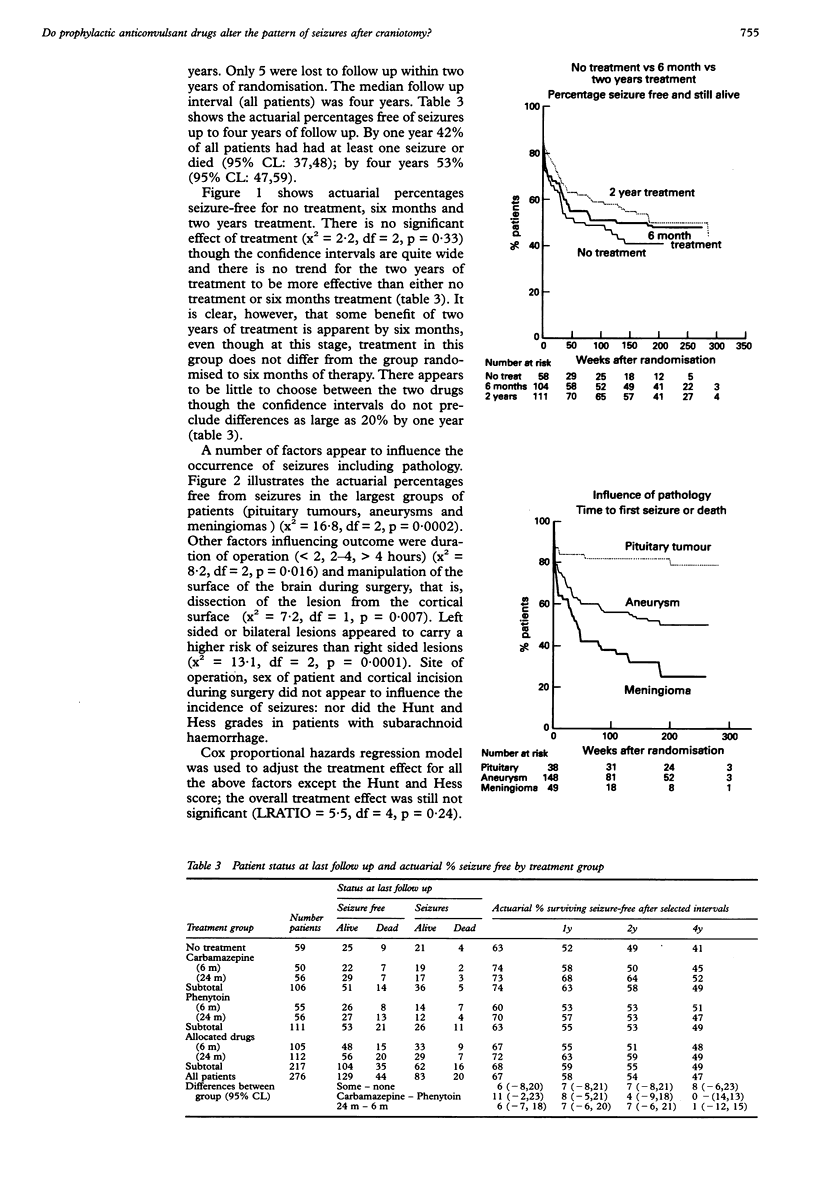
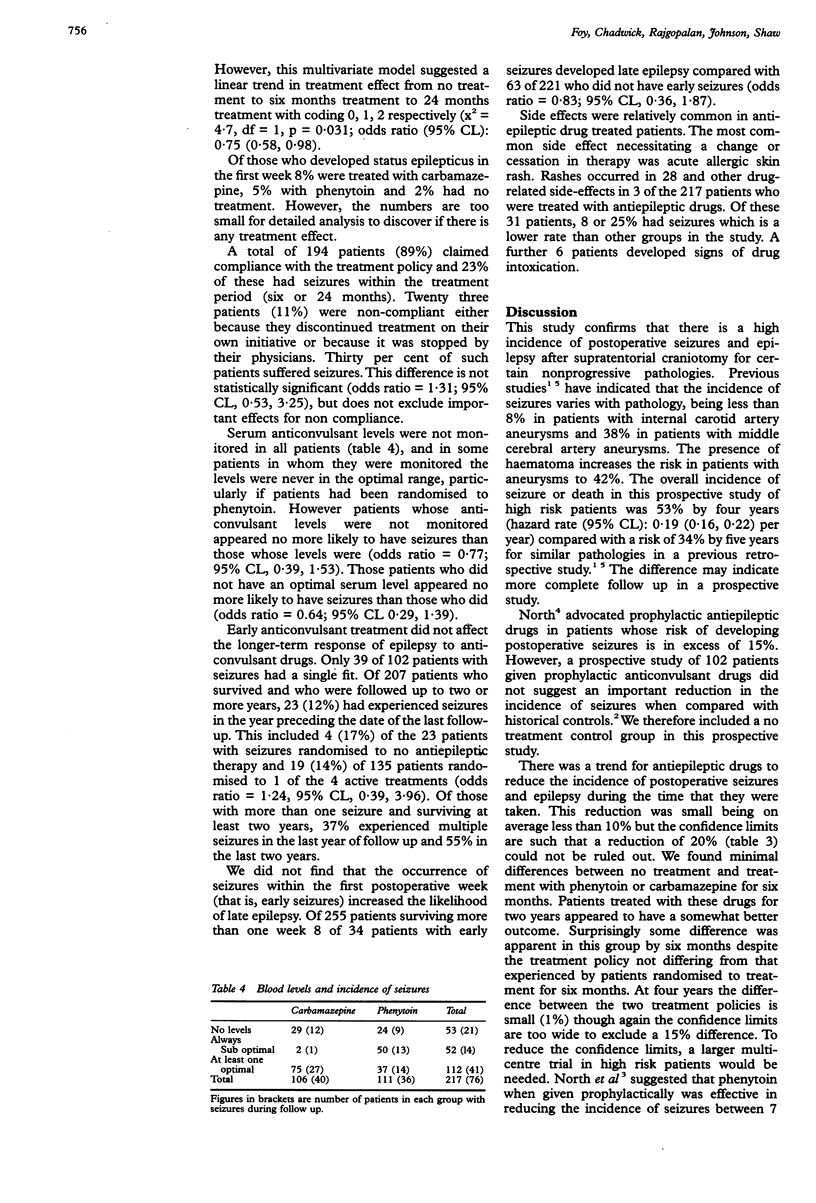
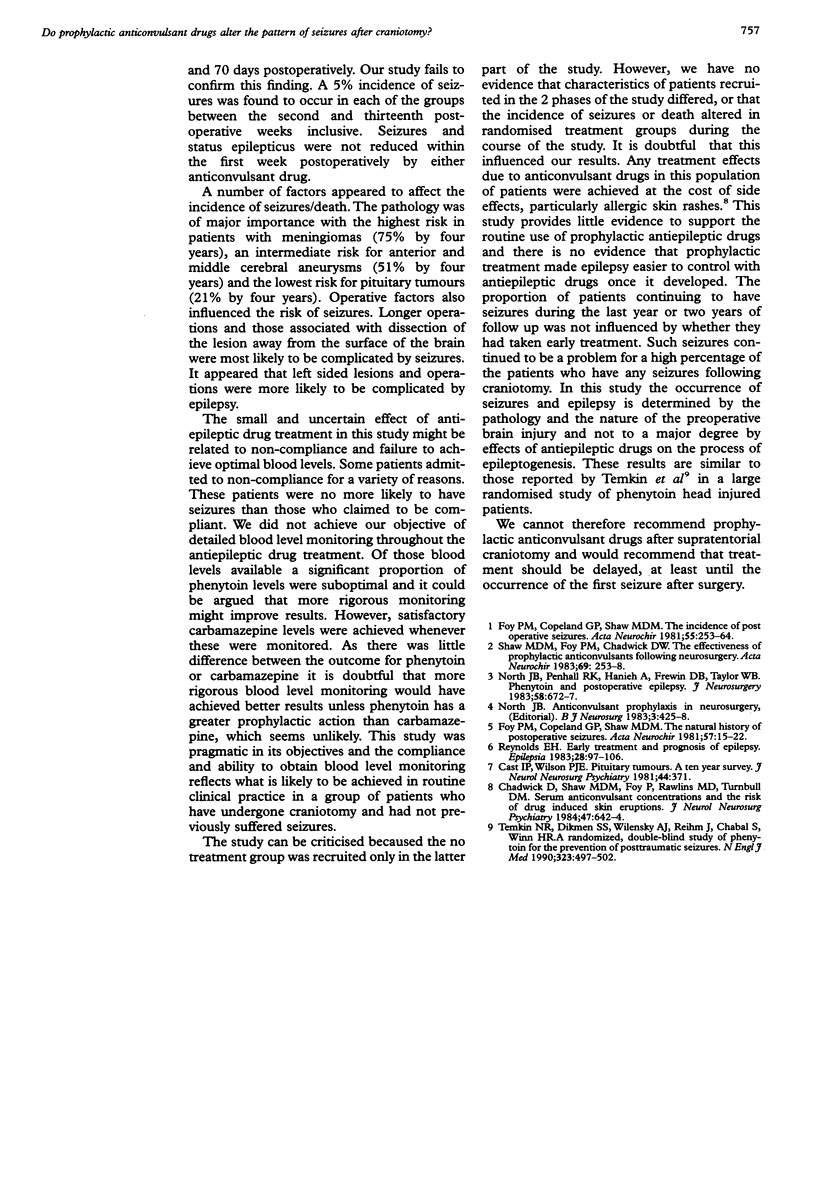
Selected References
These references are in PubMed. This may not be the complete list of references from this article.
- Chadwick D., Shaw M. D., Foy P., Rawlins M. D., Turnbull D. M. Serum anticonvulsant concentrations and the risk of drug induced skin eruptions. J Neurol Neurosurg Psychiatry. 1984 Jun;47(6):642–644. doi: 10.1136/jnnp.47.6.642. [DOI] [PMC free article] [PubMed] [Google Scholar]
- Foy P. M., Copeland G. P., Shaw M. D. The incidence of postoperative seizures. Acta Neurochir (Wien) 1981;55(3-4):253–264. doi: 10.1007/BF01808441. [DOI] [PubMed] [Google Scholar]
- Foy P. M., Copeland G. P., Shaw M. D. The natural history of postoperative seizures. Acta Neurochir (Wien) 1981;57(1-2):15–22. doi: 10.1007/BF01665108. [DOI] [PubMed] [Google Scholar]
- North J. B. Anticonvulsant prophylaxis in neurosurgery. Br J Neurosurg. 1989;3(4):425–427. doi: 10.3109/02688698909002827. [DOI] [PubMed] [Google Scholar]
- North J. B., Penhall R. K., Hanieh A., Frewin D. B., Taylor W. B. Phenytoin and postoperative epilepsy. A double-blind study. J Neurosurg. 1983 May;58(5):672–677. doi: 10.3171/jns.1983.58.5.0672. [DOI] [PubMed] [Google Scholar]
- Reynolds E. H. Early treatment and prognosis of epilepsy. Epilepsia. 1987 Mar-Apr;28(2):97–106. doi: 10.1111/j.1528-1157.1987.tb03633.x. [DOI] [PubMed] [Google Scholar]
- Shaw M. D., Foy P., Chadwick D. The effectiveness of prophylactic anticonvulsants following neurosurgery. Acta Neurochir (Wien) 1983;69(3-4):253–258. doi: 10.1007/BF01401812. [DOI] [PubMed] [Google Scholar]
- Temkin N. R., Dikmen S. S., Wilensky A. J., Keihm J., Chabal S., Winn H. R. A randomized, double-blind study of phenytoin for the prevention of post-traumatic seizures. N Engl J Med. 1990 Aug 23;323(8):497–502. doi: 10.1056/NEJM199008233230801. [DOI] [PubMed] [Google Scholar]


